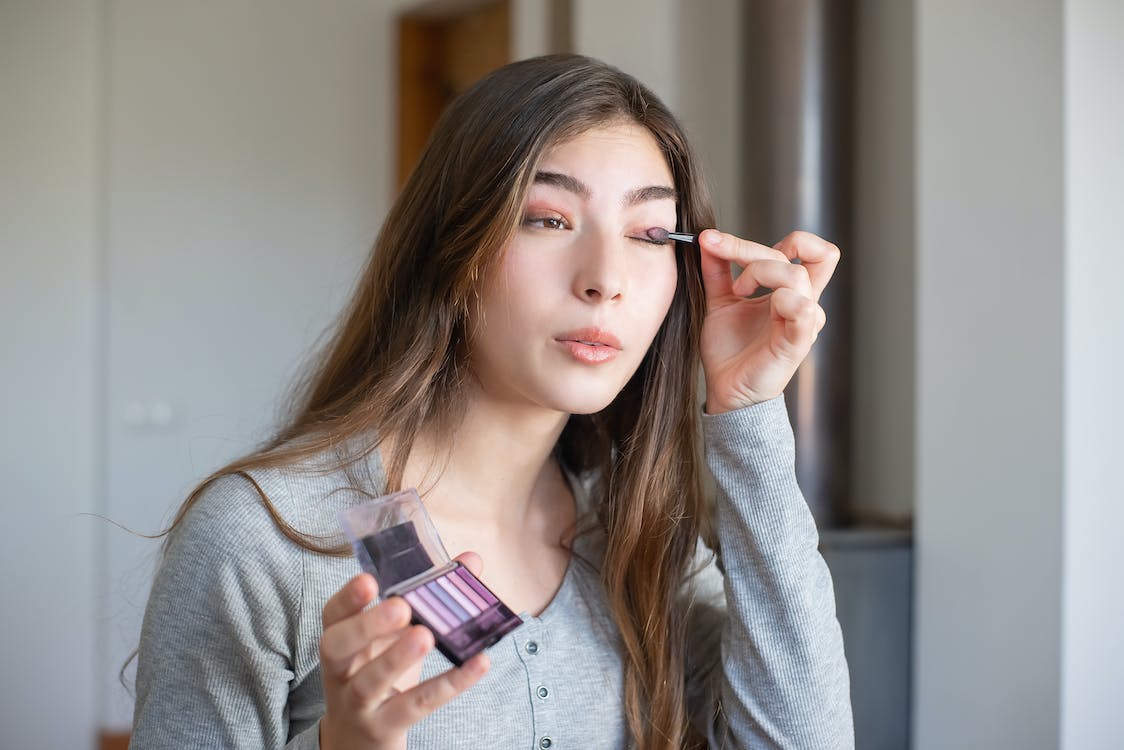As humans, we struggle with hormones, lack of sleep, stress and tend to enjoy the occasional sandwich and whole milk latte. That being said, many of us are prone to acne breakouts, dark circles under the eyes, dullness, oiliness and a number of other skin problems. And on some of our worst days, covering these imperfections up can be quite the struggle.
Luckily, today there’s no shortage on make up for face – from silky, high-coverage foundations to dewy highlighters and blushes that mimic a healthy, youthful flush. Here are some tips on how to use makeup to achieve a flawless, glowing complexion that will make you look so amazing that you don’t even need an Instagram filter.
Start With a Glowing Canvas
A painting is as beautiful as the canvas it’s painted on. If the canvas isn’t right, no matter how rich the colours you use, they will start to smear. And the same goes for make up for face. Before you go onto applying all the layers of foundation, concealer and highlighter, you need to make sure the skin is prepared to receive all of that.
Always start with clean and moisturized skin. To not overly dry your skin out and lose the healthy natural shine, use a light cleaning lotion. To lock the moisture in, apply a moisturizer suitable for your skin type. If you want to go an extra step further, use a sheet hydrating mask that will give you a natural flush that makes the skin look plump and fresh. If you have specific skin issues you want to target, use a mask with appropriate ingredients, such as green tea to soothe inflammation or rose to prevent oiliness.
Prime Time!
Even if it may seem like an unnecessary step, especially when you’re in a hurry, priming your skin is a must if you want a perfect complexion. When chosen and applied right, the primer can even out your skin tone and texture and prolong the effect of the foundation, ensuring perfect all day coverage.
There are many types of primers on the market. You can even use two types at the same time. For instance, you can apply an anti-shine primer around areas of your face that are prone to oiliness, like for instance the forehead. And then use a sheer, illuminating primer to add glow to the tops of your cheekbones. Apply the primer on clean, moisturised skin and wait a couple of minutes for it to settle in before you move onto the next step of your make up routine.
Conceal Before the Big Reveal
Always apply a correcting concealer before you use a foundation. Use it to mask any areas where there’s uneven tones, hyperpigmentation, dark circles, redness or scars. If you do this right, you may not need to apply as much foundation. A correcting concealer is different from a regular concealer. Correcting concealers are available in several colours depending on their purpose. As a general rule, peach concealers help hide dark circles under the eyes, green concealers help reduce any redness, yellow concealers are used to hide any bruising or hyperpigmentation and purple ones are used to balance out sallow skin. You can buy a whole palette of these concealer shades to treat all these different imperfections that you might experience.
Find Your Foundation
While the foundation can even out your tone and make imperfections disappear, unless you chose the right formula, it can also make you look too cakey or patchy. You don’t want to pick something that will dry out the skin on your nose or crease under your eyes or around your lips. You need something that will be ideal for your skin. For instance, if you have dry skin, opt for a foundation containing hyaluronic acid, avocado oil or some other hydrating ingredient. On the other hand, if you struggle with oily skin, you want a mattifying foundation. Formulas containing ingredients such as Amazonian clay can suck up the excess oil without drying out your complexion.
Of course, you also need to make sure that the shade of the foundation matches your skin perfectly. Additionally, if you’re able to make an extra investment, purchasing two shades of the same makeup foundation might not be a bad idea. Skin tone fluctuates due to weather, so having two different shades in rotation can be useful. You can use the lighter shade in the winter, blend two shades when you’re transitioning into summer, and move onto a darker shade when you get tanned. This way, the tone of your face will blend in more naturally with the rest of your body.
Highlight Right
And finally, highlighting strategic areas on your face can help make your look more natural. However, if you overdo it, this can also have an opposite effect. Be mindful of where you apply a highlighter. In general, dab a bit of highlighter on the cheeks and a little on the jawline and above your upper lip for a really fresh, glowing look.
Add a Dewy Finish
And finally, once you’ve completed all the steps and applied your entire makeup, including eyes and lips, lock the final look in place with a setting mist. As opposed to a setting powder, a mist won’t leave your skin chalky-looking and won’t change the colour of your foundation. It will help keep your makeup on for longer and give the skin a more natural, dewy finish. Pick a mist with ingredients that can add radiance and prevent your skin from getting dried out from the makeup. A mist that contains Shea butter, aloe leaf juice or chamomile extract can offer a nice burst of hydration. You can even use the mist throughout the day if your skin feels tight and dry, especially during dry weather conditions.

